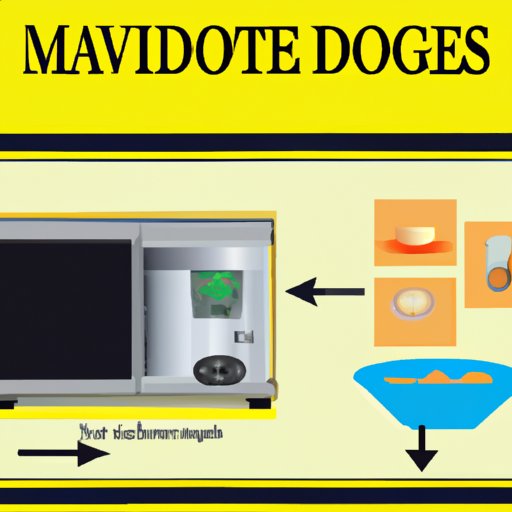Introduction
Microwave sensor cooking is a revolutionary way to cook food quickly and conveniently. It uses sensors to detect the moisture content in food, allowing the microwave to adjust the power and time accordingly. This ensures that your food is cooked evenly and perfectly every time. With its many advantages and features, microwave sensor cooking is becoming increasingly popular.

Guide to Understanding Microwave Sensor Cooking
Before you can start using microwave sensor cooking, it’s important to understand how it works. Here’s a guide to help you get started.
What is a sensor?
A sensor is an electronic device that detects changes in its environment and responds accordingly. In microwave sensor cooking, the sensor detects changes in the moisture content of the food being cooked. The sensor then sends a signal to the microwave to adjust the power and time accordingly.
How does a sensor work in a microwave?
The sensor in a microwave works by sending out microwaves that bounce off the food and measure its moisture content. The microwaves are reflected back to the sensor, which calculates the moisture level and sends a signal to the microwave to adjust the power and time accordingly. This ensures that your food is cooked evenly and perfectly every time.
What are the advantages of using a microwave with a sensor?
The main advantage of using a microwave with a sensor is that it makes cooking easier and more convenient. The sensor automatically adjusts the power and time for optimal results, so you don’t have to guess or worry about overcooking your food. It also ensures that your food is cooked evenly, eliminating the need for stirring or rotating dishes.
How to Use Microwave Sensor Cooking for Optimal Results
Once you’ve understood the basics of microwave sensor cooking, you’ll want to know how to use it for optimal results. Here are some tips to help you get the most out of your microwave.
Setting the sensors
When setting up your microwave, make sure to adjust the sensors according to the type of food you’re cooking. For example, if you’re cooking vegetables, set the sensor to “vegetables”; if you’re cooking meat, set the sensor to “meat”. This will ensure that the microwave adjusts the power and time correctly for each dish.
Tips for cooking with a microwave sensor
When cooking with a microwave sensor, it’s important to keep the following tips in mind:
- Always check the food before and after cooking to ensure it’s cooked properly.
- Cut large pieces of food into smaller pieces to ensure even cooking.
- Cover food with plastic wrap to prevent splattering and ensure even cooking.
- Stir or rotate food halfway through cooking to ensure even cooking.

An Overview of Microwave Sensor Cooking Technology
Now that you know how to use microwave sensor cooking, let’s take a look at the technology behind it. Here’s an overview of the types of sensors and features available.
Types of sensors
There are two main types of sensors used in microwave sensor cooking: infrared (IR) and radio frequency (RF). IR sensors detect changes in temperature and are better suited for cooking frozen foods. RF sensors detect changes in moisture content and are better suited for cooking fresh foods.
Features and functions
Modern microwaves with sensor cooking feature a variety of functions and settings. These include auto-defrost, auto-cook, and auto-reheat options. There may also be preset programs for specific dishes such as popcorn, pizza, and soup. Some models also feature a “smart” setting that adjusts the power and time based on the type of food being cooked.

The Science Behind Microwave Sensor Cooking
To truly understand microwave sensor cooking, it’s important to understand the science behind it. Here’s a brief overview of microwave radiation and its advantages.
How microwave radiation works
Microwave radiation is a type of electromagnetic radiation that has a frequency between 300 MHz and 300 GHz. When microwaves pass through food, they cause the molecules in the food to vibrate, resulting in heat. This is how microwaves cook food.
Advantages of using microwave radiation
Using microwave radiation has several advantages over traditional cooking methods. It cooks food faster and more evenly, and it requires less energy. Additionally, microwaves don’t produce smoke or odors, making them ideal for indoor cooking.
Conclusion
In conclusion, microwave sensor cooking is a convenient and efficient way to cook food quickly and easily. By understanding how sensors work and how to use them correctly, you can ensure that your food is cooked perfectly every time. With its many advantages and features, microwave sensor cooking is becoming increasingly popular.
Whether you’re looking for a quick and easy way to cook dinner or just want to save time in the kitchen, microwave sensor cooking is a great option. With the right knowledge and understanding, you can get the most out of your microwave and enjoy perfectly cooked meals every time.


